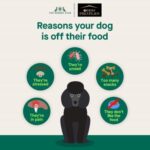Pancreatitis, an inflammation of the pancreas, can significantly impact your body’s ability to digest food and absorb nutrients. The pancreas, located behind the stomach, produces essential enzymes and hormones for digestion. When these enzymes become active within the pancreas, they can cause inflammation, pain, and impaired fat absorption, leading to oily bowel movements and deficiencies in vital fat-soluble vitamins like A, D, E, and K. Managing pancreatitis often involves dietary adjustments to reduce the burden on the pancreas and alleviate symptoms. This guide will outline What Foods To Avoid With Pancreatitis to support pancreatic health and overall well-being.
Understanding Pancreatitis and Its Impact on Diet
Chronic pancreatitis can manifest as persistent pain in the upper abdomen, which may not subside easily. A tailored eating plan, developed in consultation with a doctor and registered dietitian, is crucial for minimizing digestive system irritation. Before making any significant changes to your diet, always seek professional medical advice.
Image alt: Illustration depicting the location of the pancreas in relation to other digestive organs, emphasizing its role in digestion.
Essential Dietary Guidelines for Pancreatitis Management
Several key strategies can help manage pancreatitis symptoms through diet. These include avoiding alcohol, considering pancreatic enzyme supplements, and, most importantly, adhering to a low-fat diet.
Alcohol Consumption and Pancreatitis
Alcohol is a major trigger for pancreatitis and can exacerbate existing inflammation. Abstaining from alcohol is crucial for preventing further damage to the pancreas and alleviating pain. If you struggle with alcohol cessation, seek support from your doctor. Counseling, support groups, and medication can aid in maintaining sobriety.
The Role of Pancreatic Enzyme Supplements
In some cases, your doctor may recommend pancreatic enzyme supplements to assist your body in digesting fats and proteins. These supplements can compensate for the pancreas’s reduced enzyme production, improving nutrient absorption and reducing digestive distress.
Foods to Avoid: A Detailed Breakdown
The cornerstone of managing pancreatitis through diet is reducing fat intake. This section provides a comprehensive list of foods that should be avoided or limited.
High-Fat Foods to Eliminate
Avoiding high-fat foods is essential for reducing pancreatic stress. These include:
- Fatty Meats: Sausage, salami, bacon, and other processed meats high in saturated fat.
- Dairy Products: Whole milk, ice cream, processed cheese, and egg yolks. Opt for low-fat or non-fat alternatives.
- Fried Foods: Deep-fried and buttered foods, which are difficult for the pancreas to process.
- Pastries: Cinnamon rolls, cakes, pies, cookies, and other pastries loaded with butter and sugar.
- Snack Foods: Potato chips, nut and granola bars, and mixed nuts, which are often high in unhealthy fats.
- Certain Fruits: Coconut and avocado, due to their high fat content.
- Fast Food: Convenience meals that typically contain high levels of fat and processed ingredients.
Limiting Fats and Oils
Even healthy fats should be consumed in moderation. Limit your intake of butter, margarine, mayonnaise, and salad dressings to no more than 1 tablespoon per meal.
Hidden Fats in Everyday Foods
Be mindful of hidden fats in seemingly innocuous foods. Read food labels carefully to identify serving sizes and ingredients. Avoid cream soups and cream sauces on pasta, and choose low-fat options for sour cream, cream cheese, and yogurt.
Focus on Low-Fat Alternatives and Healthy Choices
While avoiding certain foods is crucial, it’s equally important to incorporate pancreas-friendly options into your diet.
Lean Protein Sources
Choose lean meats such as poultry (chicken, duck, and turkey without the skin) and fish. Many types of fish, including salmon, lake trout, tuna, and herring, offer beneficial omega-3 fatty acids. However, avoid fish canned in oil, such as sardines in olive oil.
Low-Fat Dairy Products
Opt for non-fat or low-fat milk, yogurt, cheese, or other milk products. Fortified soy beverage can be a good alternative.
Fruits and Vegetables
Eat a wide variety of fruits and vegetables, as they are naturally low in fat and rich in essential nutrients.
Whole Grains
Choose whole grain cereals, breads, crackers, rice, or pasta. Avoid fried breads, such as doughnuts, or breads with high fat content, such as croissants.
Flavor Enhancers
Flavor your foods with herbs and spices (such as basil, tarragon, or mint), fat-free sauces, or lemon juice.
Practical Tips for Managing Your Diet
Implementing these dietary changes can be more manageable with a few practical tips.
Smaller, More Frequent Meals
Try eating 4 to 6 small meals and snacks each day instead of 3 large meals. This can reduce the workload on your pancreas and ease digestion.
Cooking Methods
Bake, broil, or grill meats, poultry, or fish instead of frying them in butter or fat.
Ingredient Substitutions
Use applesauce, prune puree, or mashed bananas to replace some or all of the fat when baking.
Navigating Food Labels
Learning how to read food labels is essential for making informed dietary choices. Pay attention to serving sizes, total fat content, and the types of fats listed.
Conclusion: Empowering Yourself Through Diet
Managing pancreatitis effectively involves a comprehensive approach that includes avoiding specific foods, adopting a low-fat diet, and making informed dietary choices. By understanding what foods to avoid with pancreatitis and focusing on pancreas-friendly alternatives, you can alleviate symptoms, support pancreatic health, and improve your overall quality of life. Always consult with your doctor and a registered dietitian to create a personalized eating plan that meets your individual needs.
